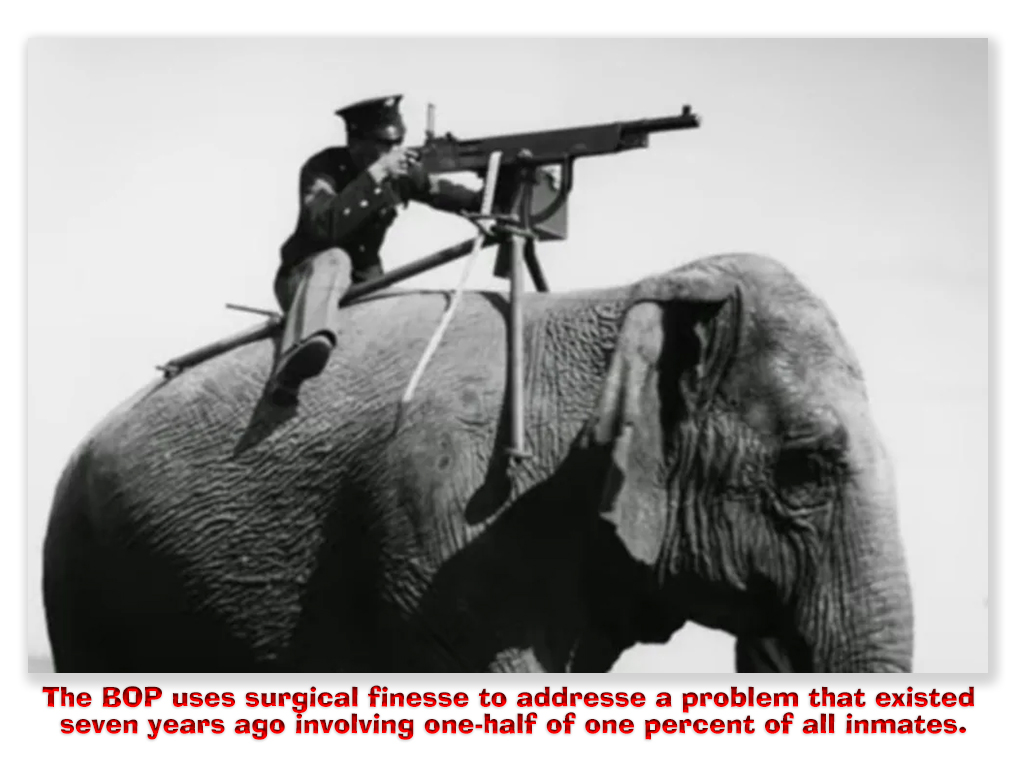We post news and comment on federal criminal justice issues, focused primarily on trial and post-conviction matters, legislative initiatives, and sentencing issues.

NEW SUPREME COURT TERM LEAVES PLENTY OF ROOM ON DOCKET FOR GUNS, ELECTIONS AND TRUMP
Yesterday was the first Monday in October, and everyone knows what that means. The Supreme Court’s new season, known as October Term 2024, began its nine-month run with a couple of dry-as-toast non-criminal oral arguments.
 At this point, there are not many cases of interest on this year’s Supreme Court docket for federal criminal law followers. But the ABA Journal last week reminded readers that “a year ago, the 2023-24 term looked like it might be relatively sleepy. But that was before the court added cases on guns, abortion medication and two matters involving former President Donald Trump and the Jan 6, 2021, riot…”
At this point, there are not many cases of interest on this year’s Supreme Court docket for federal criminal law followers. But the ABA Journal last week reminded readers that “a year ago, the 2023-24 term looked like it might be relatively sleepy. But that was before the court added cases on guns, abortion medication and two matters involving former President Donald Trump and the Jan 6, 2021, riot…”
The SCOTUS news for readers of this blog was released last Friday, when the Justices announced 15 new cases they would hear this term, all coming out of last week’s annual “long conference,” the annual culling of certiorari petitions that marks the end of SCOTUS’s summer recess.
Four of the certiorari grants involved criminal law issues. The only substantive federal criminal statute case is Thompson v. United States, which asks whether 18 USC § 1014 — making a “false statement” to influence certain financial institutions and federal agencies — also prohibits making a statement that is misleading but not false.
In Barnes v. Felix, the court will consider (in the context of a civil rights suit) whether the 4th Amendment, which prohibits police from using “unreasonable” force, depends on “the totality of the circumstances” or just under the “moment of the threat.” The reasonableness of an officer’s actions for 4th Amendment purposes is a fact-intensive inquiry. The question is whether the entire encounter with the person who is later contesting the seizure is examined in gauging whether the officer’s force is appropriate or whether only what happened in the narrow window when the officer’s safety was threatened is at issue.
In Perttu v. Richards, the issue is the technical but consequential question of whether under the Prison Litigation Reform Act, prisoners have a right to a jury trial concerning their exhaustion of administrative remedies where disputed facts regarding exhaustion are intertwined with the underlying merits of their claim.
Finally, Gutierrez v. Sanz, a capital case, deals with standing issues in conjunction with efforts by a state defendant to secure post-conviction DNA testing.
 One issue sure to make it onto the Supreme Court docket is the constitutionality of 18 USC § 922(g). The leading case on the question of the constitutionality of the felon-in-possession statute, § 922(g)(1) – the 3rd Circuit Range v. Garland en banc decision – was remanded by SCOTUS in light of United States v. Rahimi last spring. The 3rd Circuit will hold oral argument on Range tomorrow.
One issue sure to make it onto the Supreme Court docket is the constitutionality of 18 USC § 922(g). The leading case on the question of the constitutionality of the felon-in-possession statute, § 922(g)(1) – the 3rd Circuit Range v. Garland en banc decision – was remanded by SCOTUS in light of United States v. Rahimi last spring. The 3rd Circuit will hold oral argument on Range tomorrow.
So far this past summer, three circuits have grappled with Rahimi, resulting in three different approaches. Last August, the 8th Circuit held in United States v. Jackson that § 922(g)(1) was constitutional. A few weeks later, the 6th Circuit ruled in United States v. Williams that § 922(g)(1) is constitutional on its face and as applied to “dangerous people,” but not necessarily to all felons. On Sept 18, the 5th Circuit held in United States v. Diaz that § 922(g)(1) was constitutional as applied to a defendant once convicted of stealing a car based on the fact that 18th-century laws “authoriz[ed] severe punishments for thievery and permanent disarmament in other cases.”
 Meanwhile, in Greene v. Garland, a case brought against the Dept of Justice by a Pennsylvania district attorney who is a registered medical marijuana user but wants to possess a gun, DOJ attorneys argue that the nationwide ban on marijuana users owning guns is constitutional, saying it aligns with other restrictions on gun ownership by dangerous, mentally ill or intoxicated people.
Meanwhile, in Greene v. Garland, a case brought against the Dept of Justice by a Pennsylvania district attorney who is a registered medical marijuana user but wants to possess a gun, DOJ attorneys argue that the nationwide ban on marijuana users owning guns is constitutional, saying it aligns with other restrictions on gun ownership by dangerous, mentally ill or intoxicated people.
The DOJ’s position makes some sense here. Everyone knows how dangerous a district attorney can be…
SCOTUSBlog.com, Justices take up “false statement” dispute and rare capital case (October 4, 2024)
Thompson v. United States, Case No. 23-1095 (certiorari granted October 4, 2024)
Barnes v. Felix, Case No. 23-1239 (certiorari granted October 4, 2024)
Perttu v. Richards, Case No. 22-1298 (certiorari granted October 4, 2024)
Gutierrez v. Sanz, Case No. 23-7808 (certiorari granted October 4, 2024)
ABA Journal, Supreme Court’s sleepy-looking docket leaves room for potentially bigger cases to come (October 3, 2024)
Marijuana Moment, DOJ Says Allowing A Pennsylvania Prosecutor Who Uses Medical Marijuana To Possess A Gun Would Be ‘Dangerous’ (October 3, 2024)
United States v. Jackson, 110 F.4th 1120 (8th Cir. 2024)
United States v. Williams, 113 F.4th 637 (6th Cir. 2024)
United States v. Diaz, Case No. 23-50452, 2024 U.S. App. LEXIS 23725 (5th Cir. Sep. 18, 2024)
Greene v. Garland, ECF 32, Case No 1:24-cv-21 (W.D. Pa., filed October 1, 2024)
– Thomas L. Root


 This number represents an improvement over FY 2023 (13.8% of 3,140) and a very slight improvement over the cumulative average of the 15.9% grant rate since the First Step Act – which gave prisoners the right to file their own motions instead of limiting such filings to the whims of the Federal Bureau of Prisons – became law in December 2018.
This number represents an improvement over FY 2023 (13.8% of 3,140) and a very slight improvement over the cumulative average of the 15.9% grant rate since the First Step Act – which gave prisoners the right to file their own motions instead of limiting such filings to the whims of the Federal Bureau of Prisons – became law in December 2018. The Commission also reported that of 12,366 USSG Amendment 821 Part A movants – seeking a lower sentence because they previously had a higher Criminal History Category for being on probation, parole or supervised release when they committed their current offense (“status-point” offenders) – 35.9% have been granted. Of the 9,649 USSG Amendment 821 Part B movants seeking a lower sentence because they had absolutely no prior criminal offenses (zero criminal history points), 30.9 pct have been granted.
The Commission also reported that of 12,366 USSG Amendment 821 Part A movants – seeking a lower sentence because they previously had a higher Criminal History Category for being on probation, parole or supervised release when they committed their current offense (“status-point” offenders) – 35.9% have been granted. Of the 9,649 USSG Amendment 821 Part B movants seeking a lower sentence because they had absolutely no prior criminal offenses (zero criminal history points), 30.9 pct have been granted.
















